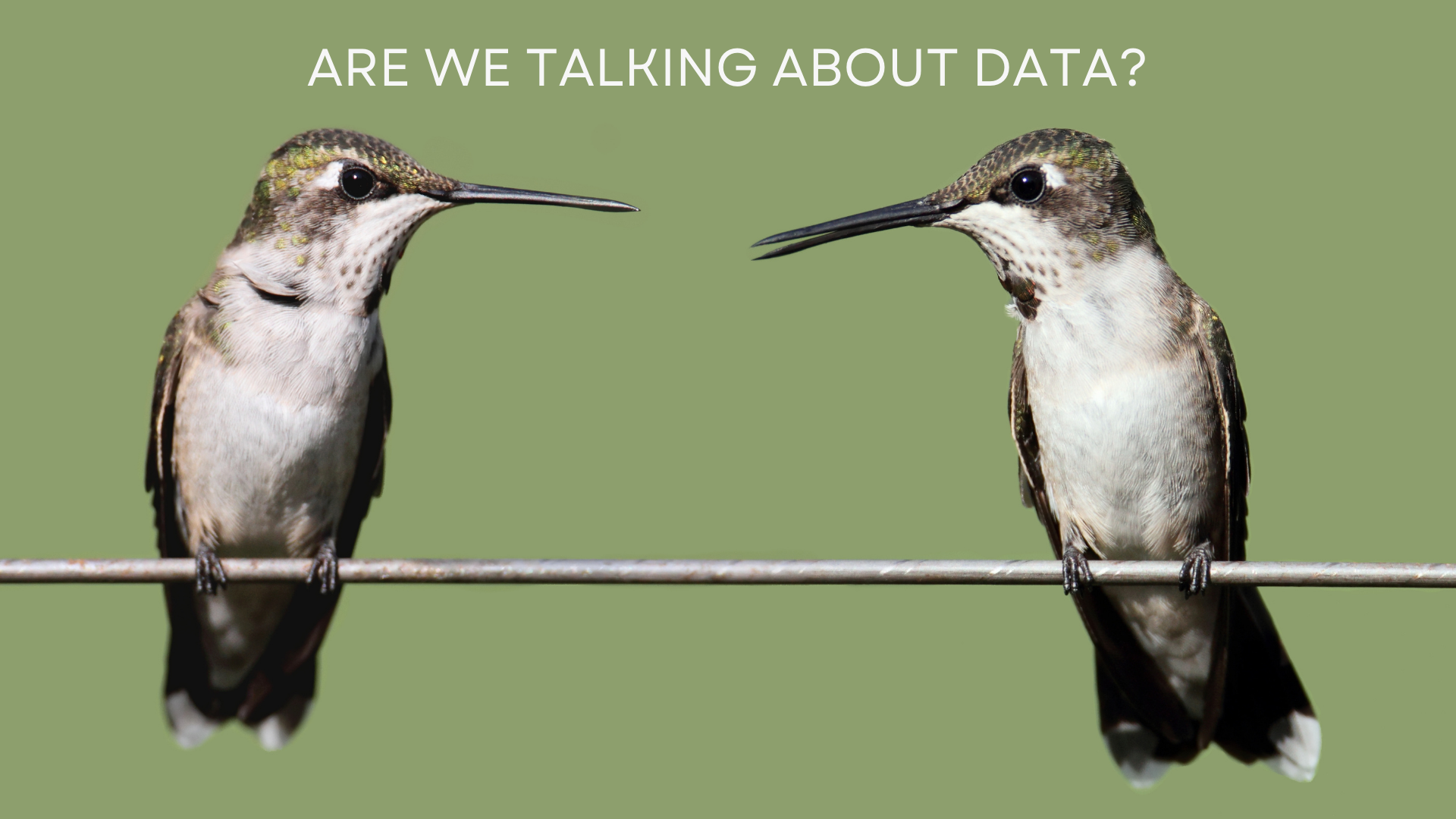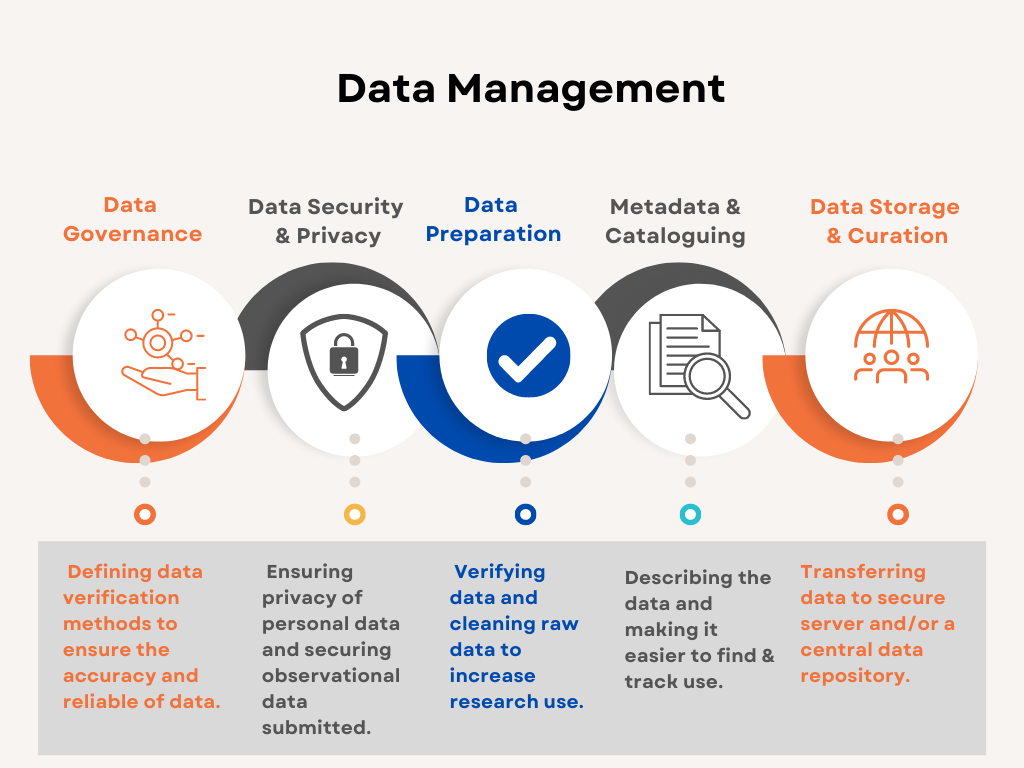A Treasure Trove of Migratory Data
Publishing 25 Years’ Worth of Monarch & Hummingbird Data

Our Big Announcement
For over 25 years, Journey North volunteers have heralded the arrivals and departures of migratory wildlife. Capturing the movement of butterflies and birds across a large geographical range would not have been possible without the involvement of thousands of people who looked to the sky with wonder and curiosity – and then took the time to report their observations to Journey North.
Now, this treasure trove of migratory data is more accessible to scientists than ever before. Journey North has published two data packages with the Environmental Data Initiative (EDI), a central data repository for environmental data.
- Sheehan, N. and L. Weber-Grullon. 2021. Journey North – Monarch Butterfly and Milkweed observations by volunteer community scientists across Central and North America (1996-2020) Ver 1. Environmental Data Initiative. Data contains 227,434 observational records submitted by 42,518 citizen scientists for the period 1996 and 2020. Take me to data package>>
- Sheehan, N. and L. Weber-Grullon. 2021. Journey North – Hummingbird observations by volunteer community scientists across Central and North America (1996-2020) Ver 1. Environmental Data Initiative. Data package contains 164,842 observational records submitted by 30,703 citizen scientists between 1996 and 2020. Take me to data package>>
From Data Collection to Data Stewardship
Publishing these two datasets is the culmination of efforts begun several years ago to improve data management practices for Journey North. Since 1994, citizen scientists have submitted close to 600,000 observational reports to Journey North, making Journey North a data collection powerhouse for migratory species like Monarch Butterflies, hummingbirds, American Robins and Common Loons. In 2019, Nancy Sheehan became the Journey North program coordinator bringing extensive experience in citizen science, data management, community engagement, and participatory research. From the outset, Sheehan recognized the potential gold mine that Journey North’s long-term observational data represented.
“It was like finding a treasure. With close to 600,000 records submitted by citizen scientists over 25 years, there was so much unrealized potential to contribute to scientific research about migration and seasonal change.” – Nancy Sheehan, Program Coordinator
Sheehan embraced the challenging work needed to unleash the full potential of this data to contribute to the scientific research. Sheehan targeted a number of data governance tasks first before moving onto broader data management tasks.

Privacy and Terms of Use
Today, it seems as if anyone can submit data on anything, from anywhere, at any time. In the age of big data, protecting the privacy of those who participate in citizen science projects can be challenging. Through the years, Journey North has implemented measures to protect the privacy of data and of the data collectors alike. Yet neither a privacy policy nor a data terms of use policy had been articulated clearly. Over the past two years, Sheehan worked to craft these policies that set standards for data use and described privacy policies. Both the Privacy Policy and the Terms of Use Policy, grounded in Creative Commons license, have now been posted to the Journey North website. Data security and privacy is also ensured by using firewalls, backup servers and data encryption. On all public facing data displays, including our interactive maps, geospatial data is protected by zoom levels. Geospatial data is only shared to the third decimal point which is like placing a 110 meter radial buffer around a particular geospatial data point.

Data Preparation, Documentation and Access
Researchers often express skepticism about data collected by volunteers with variable expertise, especially when little information is available that describes what data are collected and how data are verified. Journey North lacked metadata documentation – or “data about the data” – to allay the skeptics.
Starting in the late 1990s, several central data repositories were created to facilitate data sharing, discovery, and archiving. To expand the use and to preserve Journey North data for future discoveries, Journey North data needed to be published to a central environmental data repository. Sheehan determined that now was the time for Journey North to take advantage of these new systems of data stewardship.
“Basically, we needed to be better data stewards of the incredible legacy passed onto us from dedicated Journey North citizen scientists through the years. We needed to ensure that we were meeting FAIR Guiding Principles as data managers -- that is we need to ensure that this data is findable, accessible, interoperable and reusable.” – Nancy Sheehan, Program Coordinator
Tackling the Work Collaboratively
With limited resources and staff capacity, Sheehan looked to the wider University of Wisconsin (UW) system to tackle the remaining barriers. While attending an event hosted by the UW Data Science HUB, Sheehan learned of EDI and the EDI summer fellowship program. Sheehan applied and was awarded a grant to host a fellow in early in 2021. Luis Weber-Grullón, a recent graduate of the University of Arizona, was selected for this EDI Fellowship with Journey North. This fellowship turned out to be a gamechanger for Journey North.
“Without the financial and technical assistance of EDI and the skills Luis Weber-Grullón brought to this work, I would never have been able to publish these datasets to a central repository. With this effort, we are honoring the many thousands of volunteers who have collected observational data over the past 25 years. On behalf of the wider Journey North citizen scientists (past and present), I encourage scientists to use these data to explore pressing questions in wildlife migration.” – Nancy Sheehan, Program Coordinator
With only ten weeks for this fellowship, Sheehan worked at a fast pace with Weber-Grullón to “clean” historical datasets to conform to Journey North’s current data structure. Using Python and other programming packages, Weber-Grullón recategorized older reporting fields and matched “retired” fields with current data reporting fields. Over the course of Journey North’s 26 years, there has been a plethora of different reporting field syntax used. Weber-Grullón worked diligently to harmonize reporting fields, date fields, registration identifiers and geographic locations.
After this lengthy process, Sheehan and Weber-Grullón moved to the data publishing phase to successfully publish two data packages to the EDI data repository. Associated with each dataset is an extensive metadata document describing data assurance and quality verification methods used by Journey North staff; protocols and methods followed by observers; and descriptions of the spatial and temporal scale of the various Journey North datasets. Each of these data packages has Digital Object Identifier (DOI), a unique reference identifier. Having a DOI will help ensure that these datasets are accessible and discoverable without requiring a separate Google searches or finding out about Journey North datasets by word-of-mouth. Researchers are also increasing incorporated DOIs into references which means that Journey North datasets will be discoverable in articles that use Journey North data. DOIs are also machine-readable, supported by online discovery and can be used in indexes and online libraries.
More work is yet to be done. Journey North still needs to prepare and publish data packages for ten other projects, including Red-winged Blackbirds, Common Loon, Baltimore and Bullock’s Orioles, American Robins, and Barn Swallows.
Telling the Migration Story
While the audience for these published datasets will most likely be scientists, Journey North remains committed to providing access to the data to the wider community, including land managers, citizen scientists, educators, and other stakeholders. Toward this end, Journey North continues to publish weekly news updates on migration happenings. These updates rely on the comments and photos submitted by Journey North citizen scientists. Guest writers provide regional and global contexts for these stories. Journey North also tells migration stories through videos and interactive maps that display the data in real-time.





